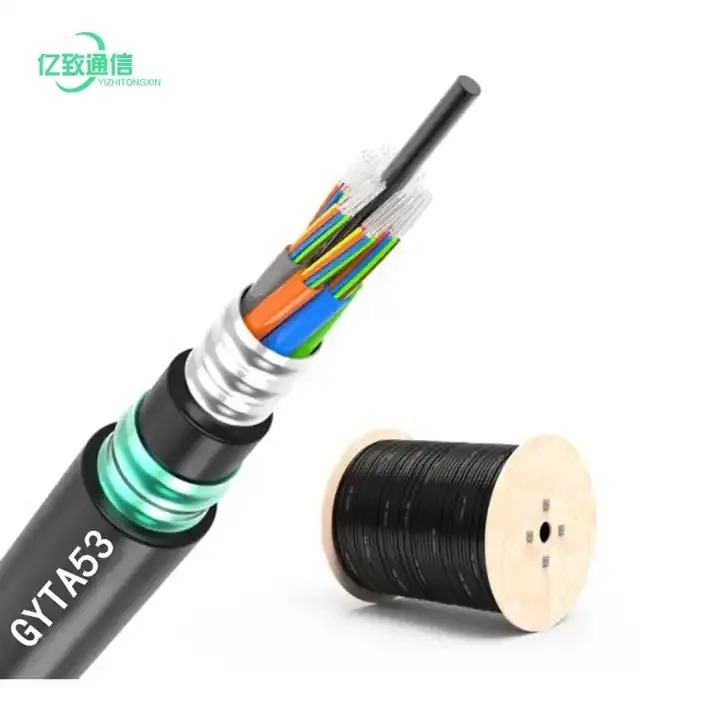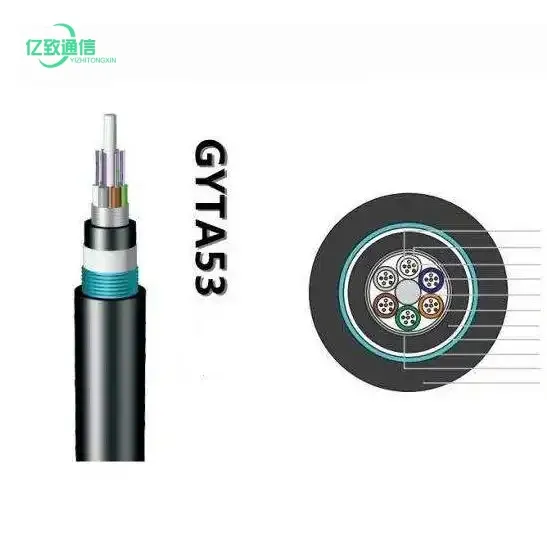Exploring the Role of Communication Cables in Modern Infrastructure
Communication cables are foundational elements in modern infrastructure. They form the essential pathways for transmitting data, signals, and power in a wide range of applications. Whether in homes, offices, industrial facilities, or public networks, the choice and quality of communication cables can significantly influence performance, reliability, and longevity. High-quality cables reduce signal loss, minimize interference, and support high-speed connectivity. For businesses and individuals, understanding where communication cables are commonly used is key to optimizing system performance and maintaining stable networks over time.
Networking Systems and Internet Connectivity
Office and Enterprise Networks
Communication cables are at the heart of office networking systems. They connect computers, servers, routers, and switches to ensure smooth communication across internal networks. In large enterprises, even a small reduction in network speed can affect productivity and operational efficiency. Twisted pair cables such as Cat5e, Cat6, or Cat6a are commonly deployed in offices because they balance cost and performance while supporting high-speed Ethernet connections. Shielded cables may be used in environments with heavy electrical interference to prevent data corruption and maintain signal clarity. Proper cable installation, combined with high-quality materials, ensures that all devices communicate reliably, reducing downtime and enhancing workflow efficiency.
Home Internet Setups
In residential setups, communication cables are crucial for delivering reliable internet and network connectivity to multiple devices. Fiber optic cables are increasingly favored for their ability to handle high-bandwidth applications like 4K streaming, online gaming, and remote work. Even traditional copper Ethernet cables continue to play an important role in home networking, especially for shorter-distance connections where cost-effectiveness is key. Homeowners must pay attention to cable quality and routing to avoid signal degradation caused by physical bends, interference from electrical appliances, or poor connectors.
Audio-Visual and Entertainment Systems
Home Theater and Media Centers
High-definition audio and video systems rely heavily on the quality of communication cables. HDMI, coaxial, and optical cables transmit data between televisions, projectors, sound systems, and media players. Low-quality cables can lead to pixelated images, delayed audio signals, or complete connectivity loss. Choosing robust communication cables designed for high-speed signal transmission ensures that the entertainment experience remains immersive and uninterrupted. Long cable runs may require signal boosters or active cables to maintain performance without degradation.
Professional Media Production
Media production environments, including studios for video editing, broadcasting, and live streaming, demand top-tier communication cables. Reliable data transfer is essential to prevent lost frames, audio lag, or corrupted footage. High-quality fiber optic cables and shielded copper cables are commonly used to maintain precision and clarity across large setups. Professionals must also implement organized cable management systems to minimize tangling, avoid damage, and facilitate quick troubleshooting.
Industrial and Commercial Applications
Automation and Control Systems
In manufacturing and industrial facilities, communication cables are used to connect programmable logic controllers (PLCs), sensors, actuators, and monitoring systems. These cables ensure that machines operate in harmony and respond accurately to commands. Shielded communication cables help reduce interference from heavy machinery, motors, and electromagnetic fields, which can otherwise distort signals. Choosing the correct type of cable for specific industrial environments ensures operational efficiency, prevents costly downtime, and supports safety protocols.
Security and Surveillance Systems
Communication cables are fundamental in security systems, linking cameras, sensors, and alarm systems to control panels and monitoring stations. In commercial buildings, retail spaces, and public areas, uninterrupted video feed is critical for safety. High-quality cables reduce latency and maintain image clarity, which is vital for accurate surveillance. Structured cable installations also make system expansion easier, allowing additional devices to integrate without compromising network integrity.

Smart Homes and IoT Devices
Home Automation Networks
Communication cables in smart homes connect a variety of devices, including lighting, HVAC systems, security devices, and entertainment systems. Reliable cabling ensures that all devices can communicate seamlessly with central hubs or cloud platforms. Poor-quality cables can result in dropped connections, delayed responses, or inconsistent automation routines. Choosing the right cable and properly installing it helps maintain a responsive and fully integrated smart home ecosystem.
Internet of Things Applications
IoT systems rely on communication cables to transmit data from sensors and devices to processing units or cloud services. Accurate and timely data is essential for applications such as energy monitoring, industrial automation, and healthcare systems. Robust cabling not only improves transmission speed but also enhances data security by reducing the likelihood of signal interception or interference. Long-distance communication may require specialized cables to prevent signal degradation over extended runs.
Choosing the Right Communication Cable
Material and Construction Considerations
The material, shielding, and insulation of a communication cable significantly impact its performance. Copper conductors are ideal for short-distance, cost-effective installations, while fiber optic cables are preferred for high-speed, long-distance data transmission. Shielding protects the cable from electromagnetic interference, ensuring the transmitted signal remains clear and stable. Understanding these specifications helps select cables suited to specific applications, whether for networking, industrial control, or media production.
Installation Best Practices
Even high-quality communication cables can underperform if installed improperly. Avoiding tight bends, minimizing exposure to electrical interference, securing cables away from high-traffic areas, and labeling connections correctly are essential steps. Organized cable management not only improves signal integrity but also makes troubleshooting faster and easier. Proper installation extends the lifespan of communication cables, reduces maintenance costs, and ensures consistent performance over time.
Emerging Trends in Communication Cable Usage
With the continuous growth of high-speed internet, smart technologies, and connected industrial systems, communication cables are evolving rapidly. New designs include enhanced shielding, faster transmission rates, and materials resistant to environmental damage. As homes and businesses adopt more connected devices, the demand for high-quality communication cables capable of supporting multiple simultaneous transmissions increases. Future developments may focus on greater bandwidth capacity, easier installation solutions, and cables optimized for both energy efficiency and data security.
FAQ
What are the most common types of communication cables?
Twisted pair, coaxial, and fiber optic cables are widely used for networking, audio-visual setups, industrial systems, and IoT applications.
How does cable quality affect signal performance?
High-quality communication cables reduce signal loss, minimize interference, and ensure reliable, high-speed data transmission across various systems.
Can communication cables be used for both home and industrial setups?
Yes, different types of communication cables are designed for specific environments, but many high-quality cables can be versatile enough to serve both residential and industrial purposes.
How often should communication cables be checked or replaced?
Regular inspection every 1–2 years is recommended, with replacement based on wear, environmental conditions, or observable signal degradation.
Table of Contents
- Exploring the Role of Communication Cables in Modern Infrastructure
- Networking Systems and Internet Connectivity
- Audio-Visual and Entertainment Systems
- Industrial and Commercial Applications
- Smart Homes and IoT Devices
- Choosing the Right Communication Cable
- Emerging Trends in Communication Cable Usage
- FAQ

